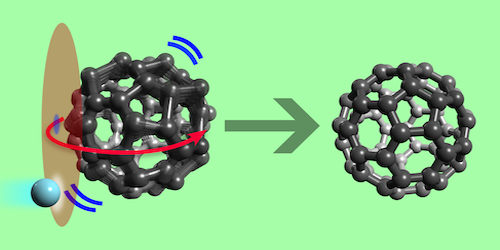Tracking Quantum State Excitation in Large Molecules
The behavior of a molecule is determined by the interplay of its various quantum states. Using laser spectroscopy, researchers have probed these states and their dynamics for small molecules. These measurements, however, haven’t previously been possible for molecules containing tens of atoms, whose crowded spectra are difficult to interpret. Now Lee Liu of JILA and the University of Colorado, Boulder, and colleagues have shown they can selectively excite the mixed rotational-vibrational, or “rovibrational,” quantum states of a molecule composed of 60 carbon atoms and then measure how these states decay following molecular collisions [1]. The approach opens opportunities for understanding and controlling such complex quantum systems.
The experiments build on previous work that combined frequency-comb spectroscopy and molecular cooling techniques to characterize the rovibrational structure of a C60 molecule, or “buckyball.” The team has now extended that work to study the molecule’s dynamics. Using a sensitive technique based on an infrared laser coupled to an optical cavity, they excited individual rovibrational states of a population of buckyballs in a buffer gas and measured the decay rates of these states after collisions between the buckyballs and the gas. They found that the decay rates dramatically depended on the gas type.
While the team measured how fast the energy in each excited state decayed, they couldn’t measure to what other states it was transferred. The team plans to glean that information by equipping the setup with a frequency comb that can simultaneously probe many rovibrational states. Such quantum state-to-state tracking could help researcher refine their understanding of the many-body physics of large, symmetric molecules like C60, Liu says.
–Matteo Rini
Matteo Rini is the Editor of Physics Magazine.
References
- L. R. Liu et al., “Collision-induced C60 rovibrational relaxation probed by state-resolved nonlinear spectroscopy,” PRX Quantum 3, 030332 (2022).




